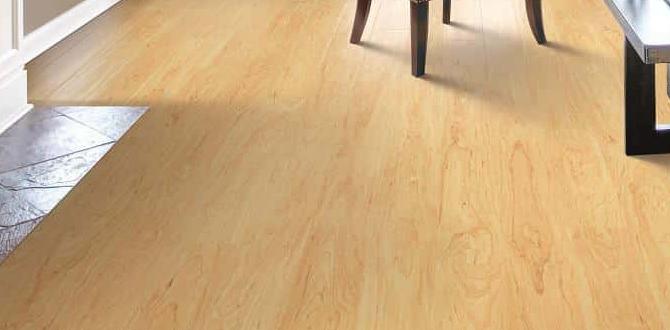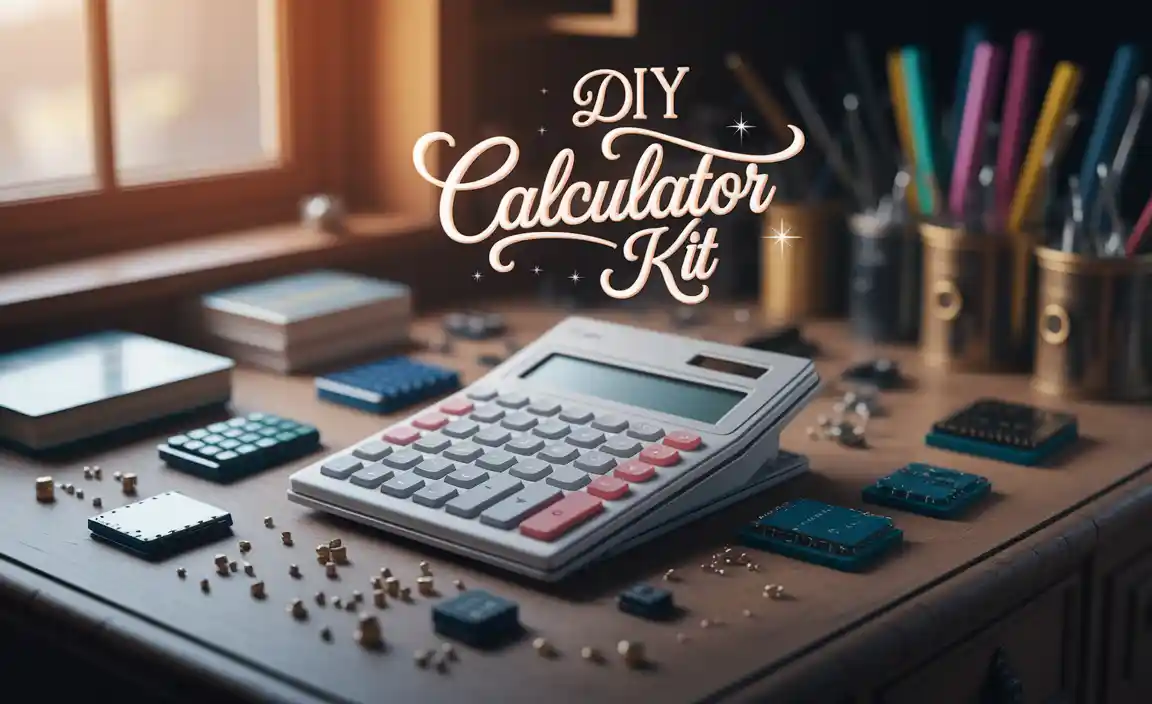Quick Summary
Regular nail gun maintenance, following these proven tips, ensures your tool fires accurately, lasts longer, and stays safe. Simple cleaning, lubrication, and checking common issues will keep your nailer in top shape for any project.
Hey there, fellow DIYer! Jack Shaffer here from Nailerguy. Ever had your nail gun jam right in the middle of a project? It’s super frustrating, isn’t it? A little bit of regular care can prevent most of those headaches and make your nailer a reliable friend for years to come. Think of it like taking care of your car – a little attention now saves you big trouble later.
In this guide, we’ll walk through easy, step-by-step nail gun maintenance that anyone can do. We’ll cover everything from a quick clean-up to deeper checks. Get ready to keep your nail gun firing perfectly!
Table of Contents
Why Nail Gun Maintenance is Key
Your nail gun is a fantastic tool that can speed up projects dramatically. But, like any tool, it needs a little TLC to perform its best. Neglecting maintenance can lead to several problems:
- Jams: Dirty or dry parts are a prime cause of nail jams.
- Reduced Power: A poorly maintained gun might not drive nails all the way in.
- Damage to the Tool: Rust, debris, and lack of lubrication can wear down internal components prematurely.
- Safety Issues: A malfunctioning nail gun can be dangerous.
- Shorter Lifespan: Without care, your nailer might need replacement much sooner than expected.
By investing a little time in maintenance, you’re investing in your tool’s longevity, your project’s success, and your own safety. It’s like getting a tune-up for your most valuable woodworking sidekick!
Essential Nail Gun Maintenance Steps
There are a few core maintenance tasks that will make a huge difference. You don’t need to be a mechanic to do these!
1. Cleaning Your Nail Gun
This is the most crucial and frequent maintenance task. Keeping your nail gun clean prevents debris from interfering with its operation.
What You’ll Need:
- Clean, lint-free cloths
- Small brush (an old toothbrush works well)
- Nail gun lubricant (check your manual for the specific type)
- Compressed air (optional, but very helpful)
- Safety glasses (always wear these!)
Step-by-Step Cleaning Process:
- Disconnect Power: FIRST and foremost, disconnect the power source. For pneumatic nailers, this means detaching the air hose. For cordless or electric models, remove the battery or unplug it. Safety first, always!
- Clear the Magazine: Remove any remaining nails from the magazine. This prevents accidental firing and makes it easier to access the nose.
- Wipe Down the Exterior: Use a damp cloth to wipe down the outside of the nail gun. Remove sawdust, dirt, and any grime.
- Clean the Nose Piece: The nose piece is where the magic happens. Check for any wood dust or debris lodged around the firing mechanism. Use your brush and a cloth to carefully clean it. You can also use compressed air (if available) to blow out any loose particles.
- Clean the Air Inlet (Pneumatic): For pneumatic nailers, unscrew the air inlet fitting gently. Clean any visible debris around the fitting and the port. A puff of compressed air can help here too.
- Check the Magazine Track: Ensure the track where the nails feed is clear. Sometimes, small bits of wood or nail fragments can get stuck, causing feeding issues.
- Wipe the Piston Rod (if accessible): Some nailers allow access to the piston rod. If yours does and it looks dirty, gently wipe it clean with a lint-free cloth. Make sure it’s completely dry before proceeding.
2. Lubricating Your Nail Gun
Lubrication is vital, especially for pneumatic nailers, to keep internal parts moving smoothly and prevent wear. Different nailer types have different lubrication needs.
Pneumatic Nail Gun Lubrication:
Most pneumatic nailers require a few drops of specialized pneumatic tool oil in the air inlet port. This lubricates the internal cylinder and piston, ensuring consistent performance. Always use oil specifically designed for pneumatic tools; regular motor oil can damage the seals.
- How Often: Refer to your user manual. A general guideline is after every few hours of use, or at the end of each workday if you use it heavily.
- How To:
- Disconnect the air hose.
- Locate the air inlet port on the nailer.
- Apply 2-3 drops of pneumatic tool oil into the port.
- Reconnect the air hose.
- Fire the nail gun a few times in a safe direction (no nails loaded) to distribute the oil. You might see a slight puff of oily air – this is normal.
Other Nailer Types (Electric, Battery):
Electric and battery-powered nailers generally have fewer moving parts that require user lubrication. Many have sealed mechanisms. However, always check your specific model’s manual. Some may benefit from a light application of grease on certain external moving parts like the magazine feeder, but this is less common and usually detailed in the manual.
3. Inspecting for Wear and Tear
Regularly looking over your nail gun can help you spot potential problems before they become major issues.
What to Inspect:
- Hose (Pneumatic): Check the air hose for cracks, kinks, or leaks. A damaged hose can reduce air pressure and affect performance.
- Trigger: Ensure the trigger moves freely and returns to its original position without sticking.
- Safety Tip: Make sure the contact tip (the part that depresses before firing) is not damaged and moves smoothly.
- Magazine: Inspect the magazine for dents or bent parts that could impede nail feeding.
- O-rings and Seals: Look for any signs of damage, cracking, or excessive wear on visible O-rings and seals. These are critical for preventing air leaks.
If you notice any significant damage, especially to critical components like the trigger or safety tip, it might be time to consult the manufacturer or a professional tool repair service. Your dealer or the manufacturer’s website is a great resource for finding authorized service centers.
Common Nail Gun Problems and How to Fix Them
Even with great maintenance, you might run into a hiccup. Here are some common issues and their solutions.
Problem: Nail Gun Jammed
This is probably the most frequent complaint! Jams usually happen when a nail isn’t fed correctly into the chamber or the mechanism isn’t fully engaged.
Troubleshooting Steps:
- Disconnect Power IMMEDIATELY! This is crucial for safety.
- Clear the Magazine: Remove all nails.
- Inspect the Nose: Look into the firing channel (where the nail comes out) and the magazine feed area. You might be able to see a bent or misfed nail.
- Use Needle-Nose Pliers: If you can see a nail, carefully try to wiggle it loose with needle-nose pliers. Be gentle not to bend or damage the internal parts.
- Tap Gently: Sometimes, a gentle tap on the nose of the gun with the palm of your hand can dislodge a misfed nail, but avoid hitting it hard.
- Consult the Manual: Your nailer’s manual will likely have specific instructions for clearing jams.
For persistent jams, it might indicate a more significant internal issue or a specific nail size/type incompatibility. Always use the correct size and type of nails recommended by the manufacturer – refer to resources like National Wood Products’ fastener guides to ensure you’re using the right ones.
Problem: Nail Not Firing (No Power)
If you pull the trigger and nothing happens, it could be a power issue or a safety mechanism.
Troubleshooting Steps:
- Check Power Source: For pneumatic guns, is the air hose securely connected? Is the compressor turned on and at sufficient pressure? For cordless, is the battery charged and properly inserted? For corded, is it plugged in?
- Test the Trigger: Does the trigger feel normal or is it stuck?
- Check the Safety Tip: Is the safety tip pressed firmly against the workpiece? Most nail guns have a safety interlock that prevents firing unless this tip is depressed.
- Air Pressure (Pneumatic): Ensure your compressor is providing adequate PSI. Refer to your nailer’s manual for the recommended operating pressure range, typically between 70-120 PSI. Too low pressure means no power.
- Air Leaks: Listen for any hissing sounds that indicate air leaks from hoses or seals.
Problem: Nails Not Driving Fully
This is frustrating when your nails are sticking out of the wood, leaving a rough finish.
Troubleshooting Steps:
- Check Air Pressure: This is the MOST common cause. Increase the PSI from your compressor (within the nailer’s limits, of course).
- Check Nail Depth Adjustment: Many nail guns have a depth adjustment wheel or setting. Ensure it’s not set too shallow.
- Hardwood vs. Softwood: Are you trying to drive nails into very hard wood? You might need higher air pressure or a more powerful nailer.
- Nail Type: Ensure you’re using the right gauge and length of nails for the wood thickness and project.
- Dirty Firing Mechanism: Debris in the firing chamber can impede the driver blade. Clean and lubricate your nailer.
Problem: Nail Gun Leaks Air
A hissing sound usually means air is escaping somewhere it shouldn’t.
Troubleshooting Steps:
- Check Hose Connection (Pneumatic): Ensure the air hose quick connector is secure and not damaged.
- Inspect the Air Inlet: Check if the air inlet fitting is loose or damaged.
- Examine O-rings and Seals: Look for worn or damaged O-rings on the piston or other accessible parts. Many manufacturers sell O-ring repair kits.
- Check the Magazine: Sometimes, air can leak from the magazine area if seals are compromised.
Deeper air leaks often require disassembling parts of the nailer. If you’re not comfortable doing this, it’s best to take it to a repair shop. Resources like Tools of the Trade tool guides offer general repair insights that might be helpful.
Nail Gun Maintenance Schedule: A Quick Reference
To make things even simpler, here’s a quick guide of how often you should perform certain maintenance tasks. This can vary based on how often you use your tool and the working conditions.
| Task | Frequency | Notes |
|---|---|---|
| Disconnect Power & Check Safety | Before Every Use | Non-negotiable safety step. |
| Clear Magazine & Inspect Nose | Before Every Use | Ensures clear path for nails. |
| Exterior Wipe Down | After Each Use | Removes dust & debris. |
| Lubricate (Pneumatic) | Daily or Every Few Hours of Use | Check manual for specific recommendations. Use proper tool oil. |
| Clean Nose Piece & Magazine Track | Weekly or As Needed | Address any buildup. |
| Inspect Hose & Air Inlet (Pneumatic) | Monthly | Look for cracks, leaks, & damage. |
| Deeper Cleaning / Check Seals | Every 3-6 Months or As Needed | When experiencing minor issues or for thorough upkeep. |
Remember, this is a general guideline. Always defer to your specific nail gun’s user manual for the most accurate maintenance schedule and procedures. A trusted resource for tool maintenance advice is often found on manufacturer websites like DeWalt’s product manual section, which can offer model-specific insights.
Tips for Extending Your Nail Gun’s Lifespan
Beyond the basic maintenance, here are some extra tips to ensure your nail gun serves you faithfully for many projects to come.
- Use the Right Nails: Always use nails that are specified for your nail gun model. Using the wrong size or type (e.g., galvanized when you don’t need them, or wrong length) can cause jams and damage.
- Store it Properly: When not in use, store your nail gun in a clean, dry place. Avoid damp environments that can lead to rust. A sturdy case is ideal.
- Don’t Force It: If a nail isn’t driving easily, don’t just keep hammering away, increasing the air pressure. Stop, diagnose the problem (jam, pressure, nail depth), and fix it. Forcing it can quickly damage the tool.
- Handle with Care: While nail guns are built tough, they are still precision tools. Avoid dropping them or subjecting them to unnecessary impacts.
- Keep it Dry: Moisture is the enemy of metal tools. If your nailer gets wet, dry it thoroughly immediately.
- Regularly Check Air Filter (Pneumatic): If you use a compressor, ensure its air filter is clean. Dirty air can force grit into your nailer, accelerating wear. The Occupational Safety and Health Administration (OSHA) provides guidelines on workplace tool safety, which indirectly speaks to the importance of maintaining tools in safe working order: OSHA’s General Duty Clause emphasizes employers must provide a safe workplace, which includes properly maintained equipment.
When to Call a Professional
While most nail gun maintenance is DIY-friendly, there are times when it’s best to hand it over to the experts.
- Persistent Jams: If you’ve tried all the standard clearing methods and the gun keeps jamming, there might be an internal alignment issue or a worn part.
- Major Air Leaks: Significant air leaks not easily fixed by checking connections or simple O-rings suggest internal seal damage that requires disassembly.
- Trigger/Safety Mechanism Issues: If the trigger or safety tip is sticking, broken, or not functioning correctly, it’s a safety hazard.
- Unusual Noises: Grinding, rattling, or other abnormal sounds can indicate serious internal problems.
- Lack of Confidence: If you’re not comfortable with a particular maintenance task or feel you might cause more damage, it’s always wise to seek professional help.
Contacting the manufacturer or an authorized service center is your best bet for these more complex issues. They have the specialized knowledge and parts to get your nail gun back in prime condition.
Frequently Asked Questions About Nail Gun Maintenance
Q1: How often should I lubricate my pneumatic nail gun?
A1: For pneumatic nailers, it’s generally recommended to apply a few drops of pneumatic tool oil into the air inlet port after every few hours of use, or at the end of each day if you’ve used it extensively. Always check your specific model’s manual for exact recommendations.
Q2: Can I use WD-40 to lubricate my nail gun?
A2: No, it’s best not to use WD-40 or similar household lubricants. They are not designed for the high-pressure, internal mechanics of pneumatic tools and can actually contain solvents that degrade seals over time or leave a sticky residue. Always use dedicated pneumatic tool oil.
Q3: What kind of nails should I use in my nail gun?
A3: Always use the brand and type of nails recommended by your nail gun’s manufacturer. Typically, nails are specified by their gauge (thickness) and length. Using the wrong size or type can cause jams, damage the driver blade, or lead to poor fastening results.
Q4: My nail gun is making a strange noise. What should I do?
A4: If your nail gun starts making unusual noises like grinding, rattling, or excessive banging, it’s a sign




